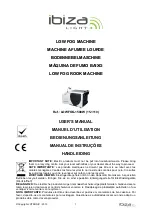
60
9-1-2022
APQS.com
Machine Operation
Low Bobbin Indicator Operation
The Low Bobbin Indicator is a wonderful way to monitor how much thread remains on your bobbin.
However, it’s important to remember that the indicator provides an
approximation
only.
The Low Bobbin Indicator works in conjunction with the Top Thread
Break Sensor (see photo at right). You MUST use the Top Thread Break
Sensor together with the Low Bobbin Indicator or the Low Bobbin
Indicator will not work.
The Low Bobbin Indicator works by measuring how much thread travels
through the Top Thread Break Sensor. In simple terms, if you use 10
yards of thread on top of the quilt, then you are also using 10 yards of
thread on the back of the quilt.
However, many factors affect the accuracy of the Low Bobbin Indicator,
including:
•
Top and bobbin tension
•
The method you use to start and stop your stitches (for example, how much bobbin thread you pull
to the surface of the quilt independently from the top thread)
•
Top thread breaks where you re-thread the top thread, pulling more through the Top Thread Break
Sensor than the bobbin uses while stitching
•
Changing the top thread (pulling more through the Top Thread Break Sensor) without pulling an
equal amount of bobbin thread through at the same time)
In essence, any situation where you pull more top thread through the Top Thread Break Sensor than you
pull up from the bobbin, or vice versa.
Your APQS machine does not “know” how many yards of thread are on the bobbin you are using. The thread
yardage on a bobbin will vary by thread weight, thickness and tension applied during the winding process.
The yardage will also be affected by how soon your bobbin winder disengages.
In concept, the low bobbin indicator on your machine works much like the gas gauge on your car. As you
drive, the gas gauge shows you how much fuel is left in the tank. When it reaches a certain predetermined
point, the car’s low fuel indicator comes on to remind you to fill up soon.
Many late model cars also come with an indicator panel that tells you how many miles you can drive before
hitting “empty.” It’s up to you to determine how far you want to “push” that estimation before it’s time to
fill up the gas tank again. That reading is based on an average fuel consumption and is affected by how full
your gas tank was to begin with. Therefore, you’ll need to learn how much farther you can actually quilt (or
want to “risk” quilting) once the low indicator triggers, based on experience and the type of thread you’re
using.
Top Thread Break Sensor
















































